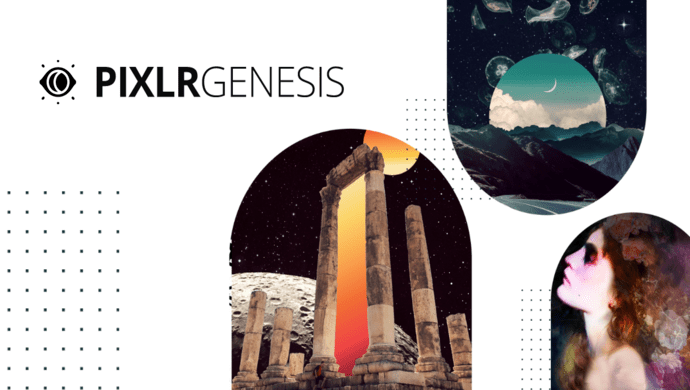
Inmagine CEO Warren Leow
Inmagine-owned Pixlr, a design and photo editing ecosystem, recently introduced Pixlr Genesis, a non-fungible tokens (NFT)-based movement. The project intends to build the world’s largest decentralised art museum on the metaverse to rival the Louvre, MOMA and National Gallery. Its mission is to empower creators and art owners to display 10,000 pieces of NFTs to the entire world in a crowdsourced museum.
But why is Inmagine entering the NFT space, and what does the company hope to achieve with this?
e27 recently spoke to Warren Leow, CEO of Inmagine, to know more about this movement.
Excerpts:
Why is Inmagine venturing into NFT/crypto space?
As you know, Inmagine is a creative ecosystem powered by design, technological innovation, and entrepreneurship. Our mission is to make design smarter, faster and easier for everyone to simplify the creative process.
Our 20-year track record is built on strong value propositions, community focus, and unique insights into the creative industry. Our primary brands include 123RF.com, Pixlr.com and Designs.ai.
As Inmagine is one of the largest creative ecosystems globally, there is a logical fit to link our strengths in content ownership, creation and management with the concept of NFTs.
Also Read: Tokens 101: How they work and where they provide value
With the ability to uniquely mark ownership on the blockchain and royalties payable via smart contracts, NFTs provide new ways to handle intellectual property (IP) management and empower content creators.
NFTs are gaining traction as a marketing tool for brands and artists to monetise their work through new business models.
There are several areas where Inmagine aims to play a part:
- new ways to manage intellectual property (IP)
- community building and sparking a movement
- brand engagement via NFTs
What does Inmagine hope to achieve by entering this space? How is the company rolling out its initiatives in this area?
We foresee that there will be more tokenisation opportunities within our core businesses, especially 123RF and Pixlr, when it comes to empowering creatives to mint and market their own NFTs.
We are using NFTs as a way to empower creators to publicise themselves and showcase their content. In addition, we aim to build a network where fellow art collectors and creators can learn, grow and inspire each other within a tightly-knit creative community.
Also Read: (Exclusive) Inmagine Group launches AI-powered online creative platform Designs.ai
We have also rolled out projects around our own IP within the generative art and collectibles space via our sister company, Photos.
Can you give us an example of the NFT project that you are working on?
Pixlr Genesis. It is a revolutionary movement to build a 100 per cent decentralised art gallery on the metaverse to rival the Louvre, MOMA and National Gallery.
It aims to bridge artists and art connoisseurs from around the globe. This movement aspires to display 10,000 pieces of NFT artwork in a world-class online gallery.

Each NFT holder will get the art generated, which acts as a pass to our community. It will also give the holder the option to display a piece of art. A decentralised art gallery on the metaverse can be curated by the public for the public.
In addition, the piece of art can be viewed from anywhere in the world by anyone. We also have the intention to allow art owners themselves to sell and auction their art within the gallery.
We hope Pixlr Genesis can be our contribution towards helping NFT creators showcase their art to a wider audience. As Pixlr founder and CEO Ola Sevandersson said, Pixlr has always been at the forefront of creative expression. The NFT space is an exciting possibility for artists to reach new audiences and show off their work.
Do you see NFTs becoming more common in trading and collecting art?
Yes, we are just at the beginning of a new NFT revolution. There will be more business models around royalty management, community building and engagement, access to new derivative products and services and even linkages to the upcoming metaverses being built.
Also Read: How Inmagine is Googlising its workplace to foster an inclusive and collaborative work culture
The concept of digital ownership and portability across ecosystems would allow new experiences to be designed, built and curated.
Which are the other NFT projects that the group is involved in?
Via our sister company, Phosus (a subsidiary established for research in AI as well as NFTs as a business), these are some of the other projects that we are actively pushing currently:
Samurai Doge (10k PFP, game-related), GenArt.AI, MeSkullz, and Nouns3D.com.
What is the longer-term vision for Inmagine/Phosus for NFTs?
We foresee ownership of digital assets to be a significant segment of its own, whether it is from a utility or securitised asset perspective. Our goal within this NFT space is to be the preeminent player within Asia by building a portfolio of assets, platforms and IP using the foundation we already have.
—
Image Credit: Inmagine
The post ‘NFTs provide new ways to handle IP management, empower content creators’: Inmagine CEO Warren Leow appeared first on e27.

